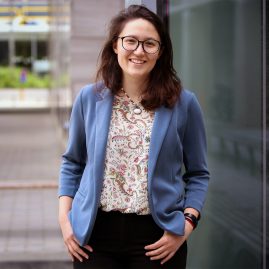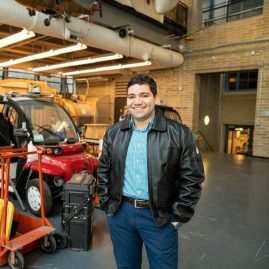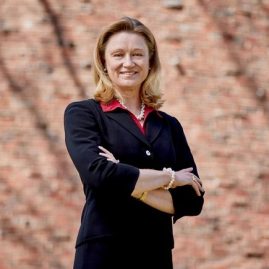Education
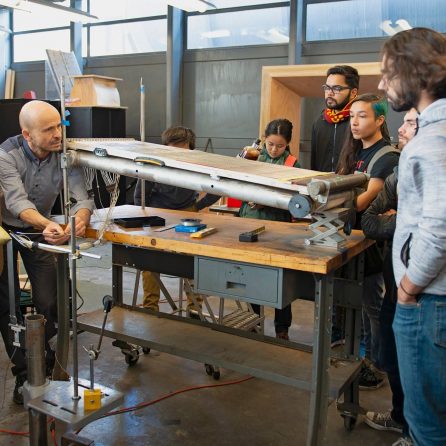
Welcome to Course 16
The AeroAstro undergraduate engineering education model motivates students to master a deep working knowledge of the technical fundamentals while providing the skills, knowledge, and attitude necessary to lead in the creation and operation of products, processes, and systems.
The AeroAstro graduate program offers opportunities for deep and fulfilling research and collaboration in our three department teaching sectors and across MIT. Our students work side-by-side with some of the brightest and most motivated colleagues in academia and industry.
Upon leaving MIT, our students go on to become engineering leaders in the corporate world, in government service, and in education. Our alumni are entrepreneurs who start their own businesses; they are policy-makers shaping the direction of research and development for years to come; they are educators who bring their passion for learning to new generations; they are researchers doing transformative work at the intersection of engineering, technology, and science.
Meet the Academic Programs Team
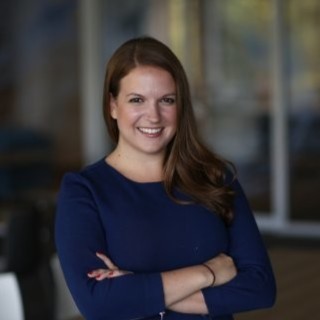
Rachael Draper
Graduate Program Administrator
Graduate Admissions and Outreach
rdraper@mit.edu

Marie Stuppard
Undergraduate Academic Program Administrator
mas@mit.edu

Erinn Taylor de Barroso
Graduate Program Administrator
Student Support and Advising
erinntb@mit.edu
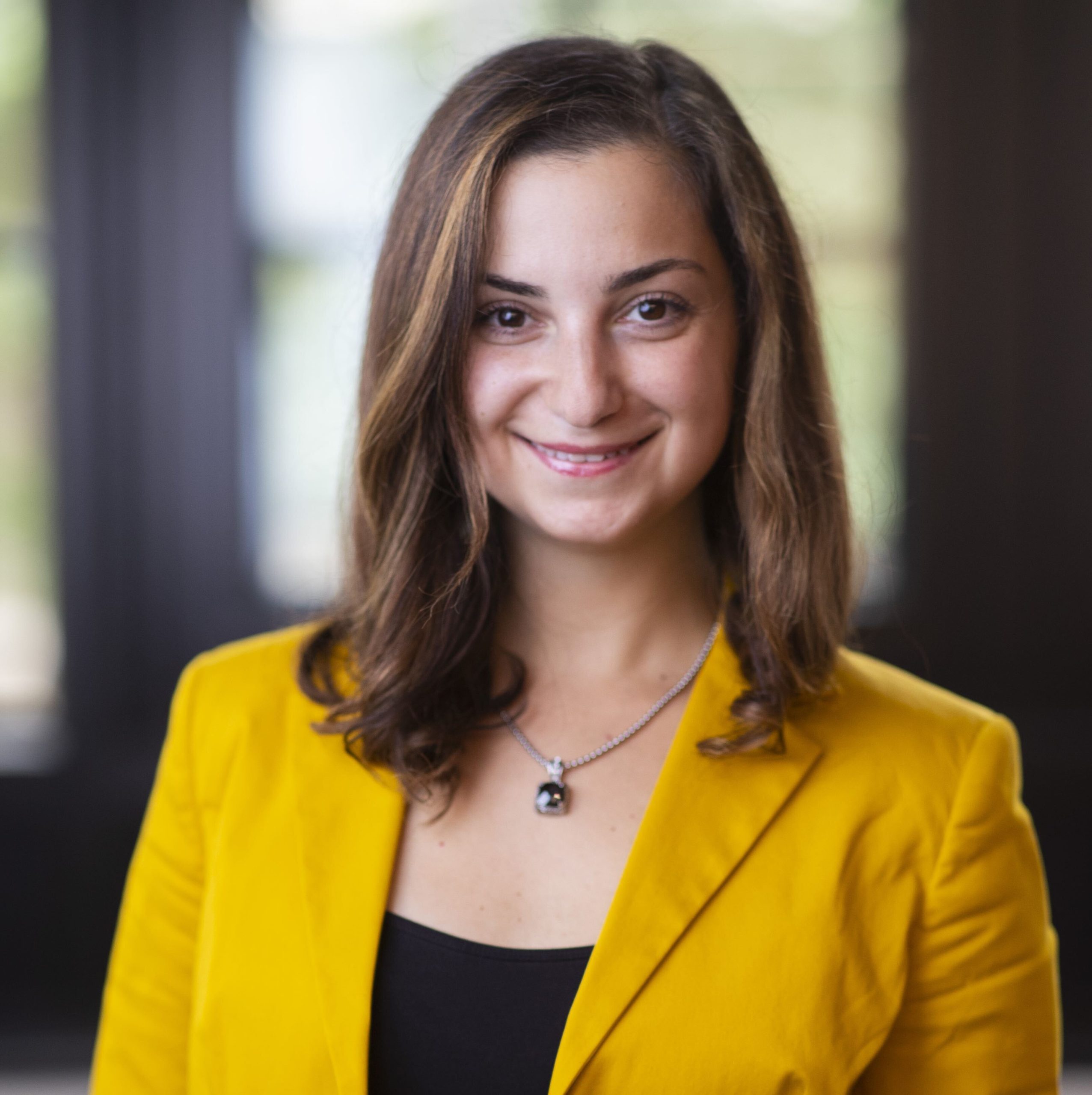
Beata (Shuster) Tunik
Senior Academic Programs Assistant
bshuster@mit.edu
Course 16 Sectors of Instruction
The department’s faculty are organized into three sectors of instruction. Typically, a faculty member teaches both undergraduate and graduate subjects in one or more of the sectors. View the latest Course 16 subject listings (via MIT’s Registrar Office.)
The Air Sector is concerned with advancing a world that is mobile, sustainable, and secure. Achieving these objectives is a multidisciplinary challenge spanning the engineering sciences and systems engineering, as well as fields such as economics and environmental sciences.
Air vehicles and associated systems provide for the safe mobility of people, goods, and services covering urban to global distances. While this mobility allows for greater economic opportunity and connects people and cultures, it is also the most energy-intensive and fastest-growing form of transportation. For this reason, much of the research and teaching in the Air Sector is motivated by the need to reduce energy use, emissions, and noise. Examples of research topics include improving aircraft operations, lightweight aerostructures, efficient engines, advanced aerodynamics, and quiet urban air vehicles. Air vehicles and associated systems also provide critical national security and environmental observation capabilities. As such research and teaching in the sector are also concerned with topics including designing air vehicles for specialized missions, high-speed aerodynamics, advanced materials, and environmental monitoring platforms.
Teaching in the Air Sector includes subjects on aerodynamics, materials and structures, thermodynamics, air-breathing propulsion, plasmas, energy and the environment, aircraft systems engineering, and air transportation systems.
Primary faculty
- Zoltán Spakovszky (Sector Head)
- Mark Drela
- R. John Hansman
- Edward Greitzer
- Carmen Guerra-Garcia
- Wesley Harris
- Ian Waitz
- Nancy Leveson
- Choon Tan
- Robert Haimes
- Peter Belobaba
- Ray Speth
- Ngoc Cuong Nguyen
- Amedeo Odoni
Secondary Faculty
The design, development, and operation of space systems require a depth of expertise in a number of disciplines and the ability to integrate and optimize across all of these stages. The Space Sector faculty represent, in both research and teaching, a broad range of disciplines united under the common goal to develop space technologies and systems for applications ranging from communications and earth observation, to human and robotic exploration. The research footprint of the sector spans the fundamental science and the rigorous engineering required to successfully create and deploy complex space systems. There is also substantive research engagement with industry and government, both in the sponsorship of projects and through collaboration.
The research expertise of the Space Sector faculty includes human and robotic space exploration, electrospray space propulsion, orbital communications, distributed satellite systems, enterprise architecture, systems engineering, the integrated design of space-based optical systems, reduced gravity research into human physiology, and software development methods for mission-critical systems. Numerous Space Sector faculty design, build and fly spaceflight experiments ranging from small satellites to astronaut space missions. Beyond these topics, there is outreach and interest in leveraging our skills into applications that lie outside the traditional boundaries of aerospace.
Academically, the Space Sector organizes subjects relevant to address the learning objectives of students interested in the fundamental and applied aspects of space engineering theories, devices, and processes. This includes courses in astrodynamics, space propulsion, space systems engineering, plasma physics, and humans in space.
Primary Faculty
- Kerri Cahoy (Sector Head)
- Paulo Lozano
- Lonnie Petersen
- Daniel Hastings
- Richard Linares
- David Miller
- Edward Crawley
- Olivier de Weck
- Dava Newman
- Manuel Martinez-Sanchez
- Jeffrey Hoffman
- Charles Oman
- Zachary Cordero
- Brian Wardle
Secondary Faculty
Most aerospace systems critically depend upon and continue to be transformed by, advances in computing. The missions of many aerospace systems are fundamentally centered on gathering, processing, and transmitting the information. Examples, where computing technologies are central, include communication satellites, surveillance and reconnaissance aircraft and satellites, planetary rovers, global positioning satellites, transportation systems, and integrated defense systems. Aerospace systems also rely on computing-intensive subsystems to provide important onboard functions, including navigation, autonomous or semi-autonomous guidance, and control, cooperative action (including formation flight), and health monitoring systems. Furthermore, almost every aircraft or satellite is one system within a larger system, and information plays a central role in the interoperability of these subsystems. Equally important is the role that computing plays in the design of aerospace vehicles and systems.
Faculty members in the Computing Sector teach and conduct research on a broad range of areas, including guidance, navigation, control, autonomy and robotics, space and airborne communication networks, air and space traffic management, real-time mission-critical software and hardware, and the computational design, optimization, and simulation of fluid, material, and structural systems. In many instances, the functions provided by aerospace computing technologies are critical to life or mission success. Hence, uncertainty quantification, safety, fault-tolerance, verification, and validation of large-scale engineering systems are significant areas of inquiry.
The Computing Sector has linkages with the other sectors through a common interest in research on autonomous air and space operations, methodologies for large-scale design and simulation, and human-automation interactions in the aerospace context. Moreover, the sector has strong links to the Department of Electrical Engineering and Computer Science and the Schwarzman College of Computing (through the Institute for Data, Systems, and Society, and the Center for Computational Science and Engineering) through joint teaching and collaborative research programs.
Primary Faculty
- Eytan Modiano (Sector Head)
- David Darmofal
- Nicholas Roy
- Hamsa Balakrishnan
- Luca Carlone
- Steven Hall
- Jonathan How
- Sertac Karaman
- Youssef Marzouk
- Jaime Peraire
- Raúl Radovitzky
- Julie Shah
- Qiqi Wang
- Brian Williams
- Moe Win
- David Mindell
- Chuchu Fan
- Adrián Lozano-Durán
